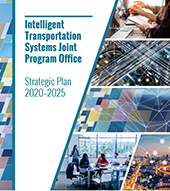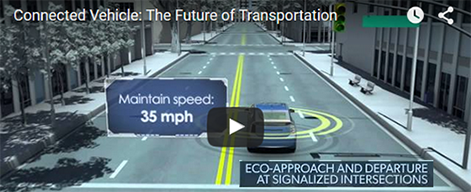Research Archive
USDOT Announces Site Selections For Human Service Transportation Improvement Demos
The United States Department of Transportation (USDOT) has announced the selection of 8 U.S. locations that will demonstrate how Intelligent Transportation Systems (ITS) can simplify accessibility to human service transportation for those who need it. These demonstrations will explore the technical and institutional feasibility of a coordinated human service transportation system with enhanced accessibility features and serve as a model for other locations to improve delivery of human service transportation.
The demonstrations are a program of two major USDOT initiatives: United We Ride (UWR) and Mobility Services for All Americans (MSAA), both of which grew out of growing concerns over rising human service transportation costs and the need to provide better service for people with special transportation needs.
The UWR/MSAA team’s joint demonstration project involves a two-phased approach: system planning and design (Phase 1) and system deployment and evaluation (Phase 2). Through an open competition Request for Proposals (RFP) released in April 2006, the USDOT has selected the following 8 locations as the Phase 1 project sites.
- Aiken, SC – planning and design of an expanded human service transportation network to include more human service transportation providers and vehicle tracking abilities (e.g., GPS), and enable customers to receive information and manage their own trips through a toll-free number and web-based applications.
- Atlanta, GA – planning and design of a regional information clearinghouse to 1) share financial and operational resources, including regional database management, accounting functions, and a unified transportation tracking system; and 2) provide direct customer service, including information dissemination and trip planning.
- Cherry Hill, NJ -- planning and design of a transportation brokerage system supported by a comprehensive set of transportation modes, and promotion of fixed-route public transportation usage for human service clients through accessibility improvement.
- Fitchburg, MA – planning and design of an enhanced communication system that allows a collection of devices to access real-time traveler information and support, such as a telephone, the Internet, wireless personal digital assistants (PDA), or a self-served kiosk or ticket booth at a train station.
- Kent, OH – planning and design of a human service transportation network that involves a call center to support trip planning/management and real-time traveler information using ITS (such as interactive voice response (IVR) and web-based applications). This project also incorporates emergency evacuation as a service scenario.
- Louisville, KY – planning and design a customer-based traveler information center that not only provides one-stop travel support for all consumers, but also functions as the broker for transportation providers to enable resources sharing and operational coordination. The proposed center aims to incorporate a comprehensive set of transportation services to meet the mobility needs of all area residents.
- Orlando, FL – integration with existing ITS deployments to promote multi-jurisdictional coordination, and introduce a universal cashless fare payment system and automated billing functions to enhance human service transportation operations.
- Paducah, KY – expansion of an existing call center to cover a larger geographic area and provide around-the-clock access to traveler support. The strengthened call center will add customer-oriented features, such as automated telephone and Internet-based trip reservations and management.
These 8 Phase 1 demonstration projects will cost a total of $3,689,736, including $2,706,045 from the USDOT and $983,731 from the selected project sites as local match. These sites will each carry out detailed designs of coordinated human service transportation systems that utilize ITS capabilities. The time line for the Phase 1 demonstration projects is 15 months, beginning at the project kick-off. Near the end of Phase 1, the USDOT intends to issue a second RFP to select two or more local communities to proceed with Phase 2 – model deployment and evaluation. Only the selected 8 Phase 1 sites are eligible to apply for Phase 2 of this demonstration.
For more information on MSAA, go to www.its.dot.gov/research_archives/msaa/.











